Top 10 Best Digital Pianos
We may also earn commissions on purchases from other retail websites.
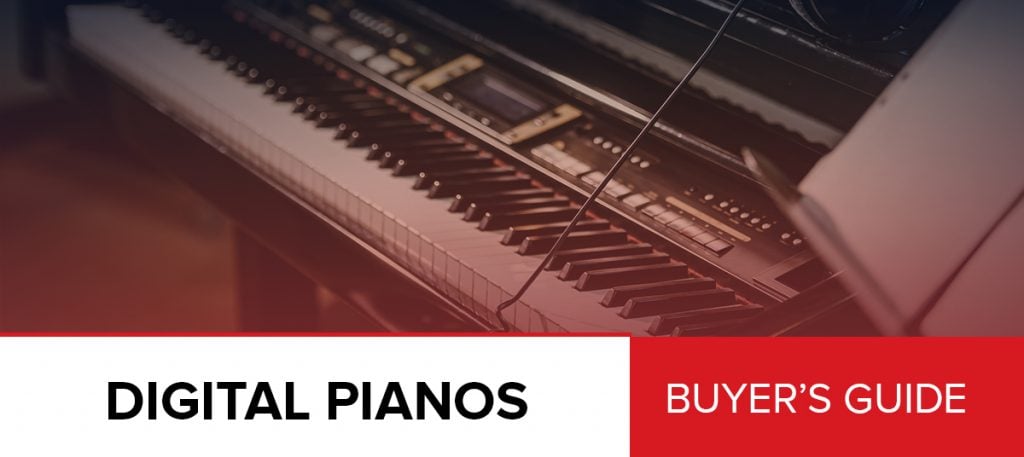
Digital pianos have made a silent revolution in the piano community. They have allowed new players to learn in an environment that allows them to practice both technique and their ear without investing a small fortune in an acoustic piano.
Today we well show you our picks for the top 10 best digital pianos on the market, as well as discuss what makes digital pianos so special and what features you should definitely look for purchasing one. By the time you’re done, you will have all the information necessary to make an educated decision down the line. Lets get started.Top 10 Best Digital Pianos
| Image | Digital Pianos / Rating | Summary | Check Price |
|---|---|---|---|
+ - 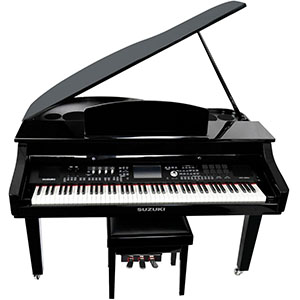 | Suzuki MDG-4000ts Total of 4.90/5 | A very capable, agile and aesthetically impressive digital piano setup from Suzuki. | |
+ - 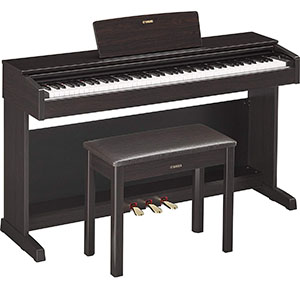 | Yamaha YDP184R Arius Series Total of 4.90/5 | Yamaha’s current flagship offering when it comes to standard console digital pianos. | |
+ - 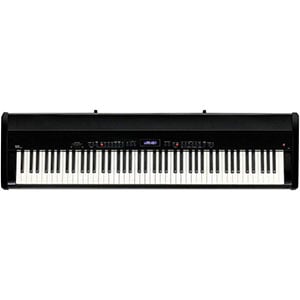 | Kawai ES8 Total of 4.88/5 | The pinnacle of modern portable design that meets all of the standards. | |
+ - 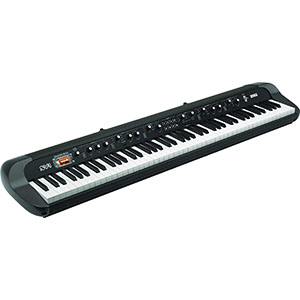 | Korg SV188BK Total of 4.78/5 | A vintage inspired portable digital piano that packs a lot of heat . | |
+ -  | Yamaha YDP143R Arius Total of 4.88/5 | A true workhorse rig that is bringing great performance for the price. | |
+ - 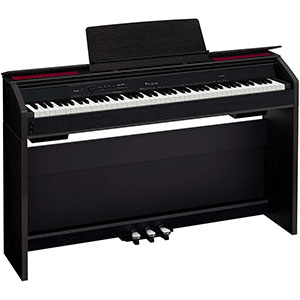 | Casio PX860 BK Privia Total of 4.83/5 | Easily one of the best bang for the buck options currently available. | |
+ - 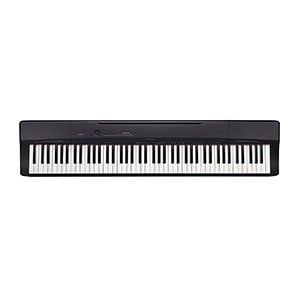 | Casio Privia PX-160BK Total of 4.83/5 | One of the best workhorse rigs in this part of the market. | |
+ - 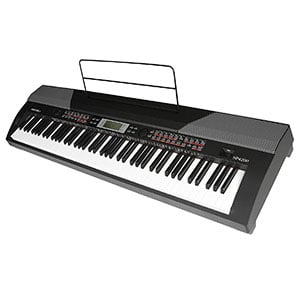 | Medeli SP4200 Total of 4.78/5 | A model that gets less exposure than it deserves but offers plenty. | |
+ - 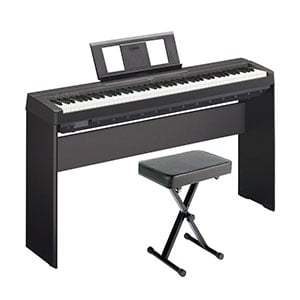 | Yamaha P45 Total of 4.25/5 | A great beginner model that will keep up with you for years. | |
+ - 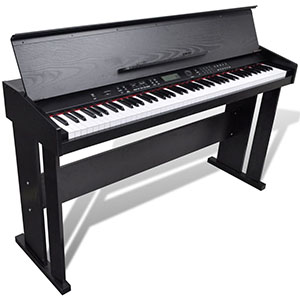 | vidaXL 88-Key Beginner Electronic Piano Total of 4.50/5 | A rather affordable option for those who are on a tight budget. |
Suzuki MDG-4000ts

| Design: |  |
| Features: |  |
| Sound: |  |
| Value: |  |
Suzuki MDG-4000ts represents just how far digital pianos have come. We are reaching the level of full emulation, which is pretty amazing. Aesthetics and awe aside, MDG-4000ts packs a mean punch in terms of features. You are looking at Suzuki’s Fatar graded hammer action which really brings out the fidelity of this piano in general. The sound engine Suzuki opted for is a masterpiece of its own. It is packed full with over 650 voices, 256 GM voices and so much more. Aside from its impressive library, the sound engine is extremely fluid and agile. As far as top tier flagship pianos go, this Suzuki is a great representative of what you can expect form this segment of the market.
Yamaha YDP184R Arius Series

| Design: |  |
| Features: |  |
| Sound: |  |
| Value: |  |
Yamaha’s Arius series has got to be among the most respected families of digital pianos on the market right now. Listing all of the reasons why that is the case would take way too much time. Instead we can simply take a closer look at the YDP184R, which is the flagship model of the range. Yamaha has loaded this piano with their CFX Premium Grand Piano Voice, Virtual Resonance Modeling engine and so many other software features. On the outside, YDP184R gives off a very traditional vibe, especially when you take into account the Graded Hammer 3 action. This action has definitely added the popularity of the entire Arius brand. If you need a proper workhorse, this is definitely it.
Kawai ES8

| Design: |  |
| Features: |  |
| Sound: |  |
| Value: |  |
Where Kawai ES8 takes the edge from most of its competition is the fact that it packs a very impressive package of features in a chassis that ultimately well within the portable segment. The piano itself is a state of the art instrument. Kawai spared no effort nor expenses while designing ES8. The RHIII Graded-Hammer Action is pure joy to play, especially if you have classical background and require something higher quality in this regard. The Imagine XL sound technology takes care of the sound in a way that just pushes the limits of digital sound in a package of this size. With 256 note polyphony, there is not much you can’t do with this incredible piano. It’s that simple.
Korg SV188BK

| Design: |  |
| Features: |  |
| Sound: |  |
| Value: |  |
Korg’s SV188 is definitely not your ordinary portable digital piano. The moment you first lay your eyes on it, you’ll notice that something is different. Korg has generally taken a bit of a gamble and designed this thing with a very retro style in mind. That vintage nature isn’t just skin deep. On the contrary, there are some vintage voices included as well. Initial novelty factor aside, SV188 is very competitive considering its price and market placement. Korg has packed it with proven hardware such as the RH3 Graded Hammer Action, the best sound engine they have to offer as well as some of the best samples on the market, period. It may be a required taste but it’s impressive.
Yamaha YDP143R Arius

| Design: |  |
| Features: |  |
| Sound: |  |
| Value: |  |
Our next pick also belongs to Yamaha’s famed Arius series. This time around it is a mid range solution that is designed to bring you the best bang for your buck. As a matter of fact, YDP143R represents an important boundary within this family of pianos. It’s the last model in line to share some of its features with the flagship. At this price, those shared features make it a bargain. With 192 note polyphony, Pure CF sound engine and a sample library that includes the famed Yamaha 9'CFIIIS concert grand piano, it is easily one of the best options you can get for this kind of money. It’s also worth mentioning that it comes with Yamaha’s GHS weighted action.
Casio PX860 BK Privia

| Design: |  |
| Features: |  |
| Sound: |  |
| Value: |  |
Casio’s Privia family of digital pianos is probably their most popular one right now. They have designed it in such a way that it covers the needs of a variety of player profiles. PX860 is one of the top tier models from the lineup, which means that it is packed to the gills with all the cool features. As you can tell by now, these pianos are very competitively priced. That is also one of the main reason for their popularity considering the hardware and software they offer. Tri-sensor Scaled Hammer Action Keyboard II, all three pedals, Multi Dimensional Morphing AiR sound engine, all make a strong case for PX860 as a flagship package that won’t just break your budget.
Casio Privia PX-160BK

| Design: |  |
| Features: |  |
| Sound: |  |
| Value: |  |
Our next pick also comes from the Privia series and represents a much affordable solution compared to its older brother we have just talked about. PX-160 may not be as complex as the 860, but it packs a mean punch for its weight class, that is a fact. With Tri-Sensor Scaled Hammer Action II and AiR sound engine being a standard part of this offer, you are dealing with a platform that is capable of much more than it initially lets on. The whole thing is further improved with a fairly diverse library that includes some of the best concert piano samples in this neck of the woods. PX160 is a great workhorse rig for performing artists and musicians overall.
Medeli SP4200

| Design: |  |
| Features: |  |
| Sound: |  |
| Value: |  |
Despite it not having as much weight as some of the names on our list, Medeli is definitely one of the most trusted names in the industry. Their models are generally popular in the mid range segment, where they offer a great value for the price and then some. Medeli SP4200 more or less represents this model to the letter. What you’re getting is a full scale hammer action with good quality keys, a great software package that is based on a 128 note polyphony rig, a more than decent library of samples and an easy to use interface. Medeli has pretty much nailed what a proper mid range model should be all about. Make sure to check it out.
Yamaha P45

| Design: |  |
| Features: |  |
| Sound: |  |
| Value: |  |
Yamaha’s P45 is probably one of the most popular portable pianos you can find in the mid range segment of the market and for a good reason. It is all about compromises, but ones we can definitely stand behind. As long as all of the core features are covered, Yamaha knew that they could dominate the mid range. That is exactly what happened with P45. This piano comes with a full scale Graded Hammer Standard action, AWM samples ran thorough a very capable sound engine and a library of voices which accentuate the piano capabilities of this model. Overall, it has proven to be a very agile piece of kit for beginners as well as intermediate players. It’s quite impressive.
vidaXL 88-Key Beginner Electronic Piano

| Design: |  |
| Features: |  |
| Sound: |  |
| Value: |  |
One you dive into the affordable segment of the market, you are going to run into more and more compromises. That is why it is very important to recognize models such as the vidaXL electronic piano. Where most brands limit their offer to portable designs in this price range, vidaXL went with a full console build that even features all three pedals. The action is a semi weighted one that is more than acceptable in terms of quality and feedback, as well as key quality. As far as sound goes, vidaXL did a decent enough job at focusing mainly on piano samples. This has ensured a respectable quality of sound that will work fine for beginners and extreme budget users.
Category Breakdown
Beginners
Everyone has to start somewhere. However the piano you start on can make all the difference in the world. Because of that we have selected a number of models which we think fit all of the most important requirements to get you on the right path. Beginner models don't necessarily have to be affordable, although this category and our selection includes such pianos as well. If you are just starting out and you aren't exactly sure where to begin with digital pianos, this guide and models listed in it are going to be your best bet.
Weighted Keys
One of the most basic requirements that defines a digital piano are weighted keys or weighted actions to be more specific. We will go into detail about these hardware features further in this guide. However, we have put together a guide for those who are focusing mainly on this feature and need something that is both proven and reliable. Nothing can replace a good weighted action, not even an extremely authentic sound engine. The tricky part is finding the one that best suits your needs and your style. This is where you really need to get into the nitty-gritty details of how these devices work and what makes them so special. Naturally, every brand has their own little signature when it comes to weighted actions
Budget / Under $300
Budget digital pianos used to be literal unicorns. While there still isn't much affordable about digital pianos, we are definitely have an established budget segment which is a great place to start if your are tight on finances. Budget pianos are not bot, contrary to popular belief. As a matter of fact, most of them are quite solid bang for the buck options. A budget model under $300 is a great way to start learning without committing too much to the instrument. We have selected what we feel are the best models in this category, which you can check out in our dedicated guide.
Under $500
Once you move one level up in the price range and move into the $500 category, things start to look up. In an ideal world this is where most beginners should start. The reason for this is quite simple. $500 price range is where you start seeing fully developed weighted actions, great sound engines and good quality hardware in general. This is also the category where you will run into a diversity of design which allows you to choose the type of digital pianos that best suit your personal needs. Overall, it is a very flexible category that still counts as fairly affordable.
Under $1000
Going one step further leads us into the $1000 price range. At this point you are starting to see some proper mid range solutions and models which are suitable for professional use. What changes the most are the software features, polyphony count, things such as ivory and ebony emulations and similar. One of the most redeeming points of pianos from this segment is the fact that they share plenty of features with top tier and even flagship models from their respective brands.
For Advanced Players
No matter which instrument you play, hobby you enjoy or profession you look at, advanced users and professionals will always have a stricter set of requirements when it comes to musical instruments or equipment in general. Same applies to digital pianos. In this category we have examined models which offer something more, something extra in terms of features, performance and overall quality. As you might expect, these often tend to be fairly expensive, but that is just one of the compromises you will have to agree to.
For Classical Players
Classical players are definitely a special breed of pianists. They are trained in a more traditional way which is noticeable if you look at their technique and other details regarding their playing style. An average classical player is or has learned how to play on a traditional piano. That means a full scale keyboard, full sized keys, weighted actions and all three pedals at the very least. We have done our best to select a number of pianos which fit all of these requirements and then some. Aside from hardware and software, we have also paid attention to aesthetics.
Portable
Portable digital pianos are among the more niche types of digital pianos. They are meant to be compact, easy to transport, but also every bit as capable as their upright counterparts. On top of that, you have to account for speakers fitting in there somewhere in most cases, proper weighted actions and other features. We have chosen a number of awesome models which were designed specifically to address these challenges, but also some which do so without being conceived as portable pianos. If you’re after a good portable model, definitely check our guide on that subject.
The Basics Of Digital Pianos
Before we move into the intricacies of digital pianos, we need to understand what they are and how they came to be. Right off the bat we need to eliminate a widely spread misconception that digital pianos are the same as keyboards. They are not. Despite their similar appearance to an untrained eye, these two instruments are very different from one another.
Keyboards utilize the same rules and most of the same techniques that apply to pianos. However, keyboards are designed to be the jack of all trades, the ultimate instrument that can emulate just about anything. Same goes for MIDI controllers and the whole variety of modern variations of this instrument. Digital pianos are a whole different ball game.
What Are Digital Pianos and How Did They Come To Be?
Digital pianos represent the natural evolution of this instrument which rode the wave of digitalization in the ’80s and ’ 90s. Needless to say, keyboards and synths of all kinds were the first. Mainly because they were much easier to realize as an instrument. The earliest digital pianos were quite crude and nowhere near as good as their acoustic counterparts. This is where most of the prejudice surrounding digital pianos comes from. However, the technology from 30 years ago has nothing on what we are using and seeing today. There were plenty of people who claimed that digital pianos will simply never reach the level of quality and authenticity of acoustic pianos.
These days, we are at a point where that is no longer true. This ability of digital pianos to bridge the gap between analog and digital with a great deal of precision and authenticity is what gave the entire industry a reason to develop this entire market.
What Defines a Digital Piano?
Digital pianos need to meet several important requirements. These are what differentiate digital pianos from keyboards. First and foremost, every digital piano needs to have a full scale, 88 key, keyboard with full sized piano keys. Plain and simple. The main reason why pianists are going for digital pianos these days is to be able to learn how to play on something that is affordable in most cases. A huge part of learning proper technique is to practice on a standardize keyboard that will be the same no matter which piano you decide to play.
Expanding on that, we come to weighted actions. This is a feature that is unique to digital pianos and for a good reason. Combined with velocity sensitivity of keys, these two are an important part of getting that technique down properly. Last but not least we have the software. This is where sound engines, sound samples, voices and effects come into play. More on that in a moment.
What Are Weighted Actions?
Weighted action is a very interesting piece of technology which goes against grain. Where most digital instruments strive to enhance and iron out some flaws of their analog counterparts, digital pianos are doing the opposite. Every acoustic piano uses a mechanism consisted of keys, linkage, hammers and strings in order to produce a sound. You press the key on the keyboard, that engages the hammer which falls and hits the string, which in turn produces the sound you want. As overly simplified as our little explanation is, it serves our purpose. When digital pianos became a thing, that whole mechanical linkage was missing. You no longer needed any hammers to fall on any strings to create the sound. All you had to do was actuate a switch, close a circuit. Pretty awesome, right? Not really. As it turns out, that mechanical linkage plays a major part in standardized piano technique. In other words, a good portion of one’s skill is dedicated to learning how a key behaves when you press it and what kind of feedback you get.
This is where weighted actions come in. Weighted actions are nothing more than emulations of that mechanical linkage found on acoustic pianos. Combined with velocity sensitivity, foot pedals and good quality keys, you can pretty much replicate the behavior of a proper acoustic piano’s keyboard. The more authentic you want things to be, the more expensive the piano gets. It’s just one of those rules.
Key Materials
Since we are talking about keys, actions and such, it’s worth briefly mentioning keys themselves. Long gone are the days of genuine ebony and ivory. Instead, we have turned to wood and synthetics of various kinds. With digital pianos, you are generally looking at a combination of synthetics and sometimes wood. It all depends on how much you are willing to invest in your piano. One thing worth mentioning is that mid range ivory and ebony emulations we have access to these days are properly impressive. Depending on the brand you turn to, some of these keys can really be hard to distinguish from ’the real thing’.
Different Types of Digital Pianos
Just like it is the case with acoustic pianos, digital pianos also come in a variety of formats and types. Knowing which one best fits your needs is key. What we are talking about here can mostly be distilled to form factor. For example, there are those who need a full sized console piano with all three pedals, a good cabinet and all that good stuff. On the other hand, there are those who need a compact digital piano that is easy to transport and is generally lightweight. Fortunately for all of us, there is a good overlap between the two as most portable models have optional cabinets you can buy as well as foot pedal racks. Then again there are niche, format specific models as well.
Sound Engines are The Core Feature of Any Digital Piano
Being able to replicate the keyboard feedback of an acoustic piano is one thing, but it won’t do you much good unless the sound that is coming out of those speakers matches that same level of quality. Every digital piano has some sort of sound processing software at its core. This is what most refer to as sound engines. Every brand has their own sound engine and they all differ in subtle and sometimes not so subtle ways. Choosing between two different brands and their sound processing software isn’t always a matter of which one is better. Instead, it has to do with which on sounds better to you.
Sound engines alone aren’t enough. You also have to have good piano voices, samples and effects loaded into that processor’s library. The main reason why so many modern digital pianos sounds so good is because they utilize actual recordings of acoustic pianos. Most brands usually record their flagship grand concert pianos where every sample consists of multiple layers. The end result is a sound that is very authentic and sounds almost if not exactly like the real thing. Naturally the quality of sound depends on how much you are willing to invest in your piano.
Accessories
One of the last things that needs to be mentioned, and which are often overlooked are accessories. A quick glance over the market reveals that most pianos feature a portable or compact format, aren’t fixed to a massive cabinet nor do they necessarily arrive with all of the pedals. If you have decided to get one such piano, be prepared to also purchase a quality stand, a stool or throne, pedals if you need them and more. As far as stands go, we strongly suggest that you get something robust enough you can count on. The last thing you want is your rig hurling towards the ground because your stand decided to give up.
Conclusion
Digital pianos have proven to be a real game changer for beginners, enthusiasts and professionals alike. From a very limited market that was full of half decent models at best, we have reached a point where you can find an abundance of very competitive digital pianos, most of which will give any acoustic counterpart a run for its money. The ones we’ve chosen for our list here are definitely among the best. The idea was to present you with a good cross section of the market, both in terms of prices and features. That way you have plenty of options.



Reader Interactions